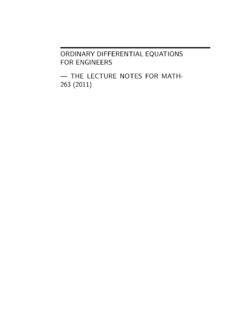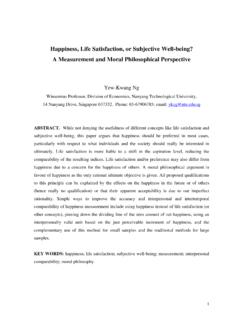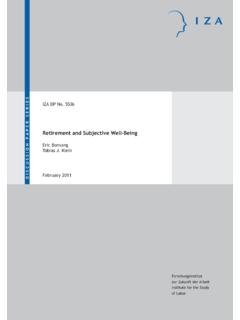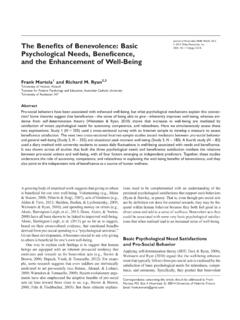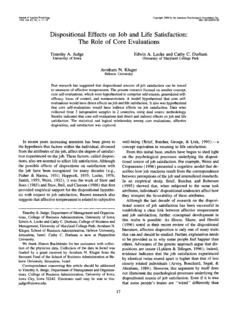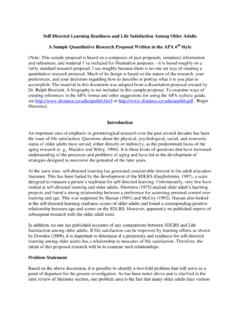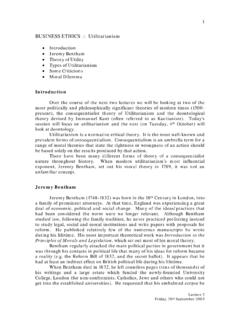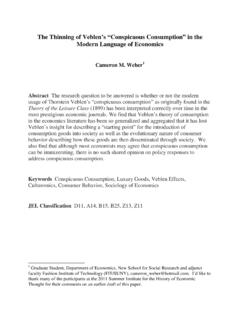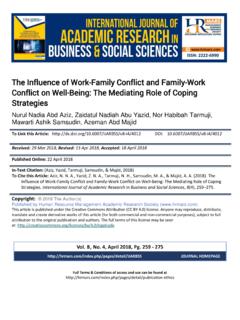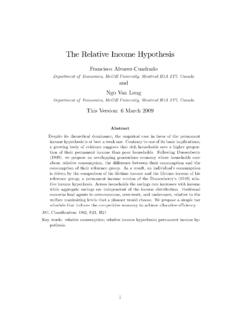Transcription of But what is Wellbeing - University of Bath
1 But what is Wellbeing ? A framework for analysis in social and development policy and practice 1. Sarah C White Centre for Development Studies ESRC Research Group on Wellbeing in Developing Countries University of Bath, UK. Paper for Regeneration and Wellbeing : Research into Practice University of Bradford, 24-25 April 2008. DRAFT: PLEASE DO NOT QUOTE WITHOUT AUTHOR'S PERMISSION. Introduction From academics to policy makers to gurus in self-help psychology or interior design, Wellbeing , it appears, is an idea whose time is come. But what does it actually mean? Is Wellbeing more than a feel good factor, a marketing gimmick to spice up the latest theory or policy, diet regime or paint colour? And if it is more than this, then how much more? For some it is all about personal success or happiness, but for others it goes much further, posing questions not only about what is good for individuals and communities, but also the nature of the 'good society'.
2 This paper draws on the work of the ESRC Research Group into Wellbeing in Developing Countries (WeD), to set out an approach for the analysis of Wellbeing in social and development policy and practice. WeD was based at the University of Bath, UK, with country teams in Ethiopia, Bangladesh, Peru and Thailand 2002- 2007. 2 The paper offers a simple definition of Wellbeing , and then explores the three basic dimensions that this comprises. It considers some potential hazards in taking Wellbeing as focus, and concludes by considering how Wellbeing might be used in social and development practice at the community level. Why Wellbeing ? Despite the diversity of contexts in which Wellbeing appears, there is a surprising consistency in the qualities that it promises. The first is its positive charge.
3 The well ' within Wellbeing ' commands assent who could not desire it? This is in marked contrast to many policy approaches which have taken negatives as their focus: poverty, social exclusion, social dysfunction .. This change might appear trivial since the aim of conventional policy approaches is to overcome the negatives they identify. In practice, however, it is a small step from identifying a group as disadvantaged to associating them with social stigma. As Nancy Fraser (1997: 25). states in relation to US domestic policy: 'Public assistance programmes "target" the poor, not only for aid but for hostility. Such remedies, to be sure, provide needed material aid. But they also create strongly cathected, antagonistic group differentiations.'. The move to the positive focus of Wellbeing may thus be more significant than it at first appears, since it challenges the stigmatising dynamic that Fraser notes.
4 This has two important aspects. The first is its simple association of the targeted group with a positive concept. In addition and more subtly, Wellbeing offers an inclusive aspiration, as relevant for policy-makers and the wealthy as the poor. This can help to combat the othering' common in policy labelling, which sets off the targeted group as different and concerned with inferior goals from planners and programme staff (see eg Schaffer 1985). The second key quality of Wellbeing is its holistic outlook. At a personal level it promises to connect mind, body and spirit, overcoming the divisions integral to post- enlightenment modernist understandings of the person. 3 In policy terms it rejects the compartmentalisation of people's lives according to areas of professional specialisation or the arbitrary 'sectoral' divisions of government departments and 2.
5 Statutory agencies. In this it builds on the foundation of other approaches, such as livelihoods frameworks in international development, and inter-professional or integrated teams in social work. 4 Like these it aims to move away from outsider categories towards an actor-oriented focus which emphasises 'strengths' rather than 'needs', and to recognise the multiplicity and integrity of people's lives forged in a complex mix of priorities, strategies, influences, activities and therefore outcomes. This leads into the third key promise of Wellbeing : that it is centred in the person and his/her own priorities and perspectives. Perhaps the signature move of a Wellbeing approach is its direction of attention not only to external objective' measures of welfare but also to people's own perceptions and experience of life.
6 At a simple level, this can be seen in terms of a contrast between the familiar objective'. indicators of income, nutrition, life expectancy etc with the subjective' dimension of how individuals feel about their health or economic status. This has spawned significant new areas of activity and enquiry, with the fields of subjective Wellbeing ,'. quality of life' and life satisfaction' in psychology and social indicators research (see eg Cummins 1996; Diener 1984; Ryan and Deci 2001; Michalos 1997; Veenhoven 2000); and the economics of happiness (Layard 2005) . Conceptualising Wellbeing While intuitively appealing, the concept of Wellbeing is notoriously difficult to define precisely. In part this is because how people understand Wellbeing will be very different in different contexts.
7 The definition given here thus stays at the intuitive level. Figure 1: Conceptualising Wellbeing Doing well - feeling good' is a fairly common formulation for Wellbeing which captures the dual aspect of Wellbeing noted above. It is one of the terms used for example by Nic Marks of the New Economics Foundation (Nef), one of the leading 3. think tanks in the UK for advancing Wellbeing ' as a policy focus (Marks 2007). Doing well ' conveys the material dimension of welfare or standard of living, suggesting a foundation in economic prosperity, though it need not be limited to this. Feeling good' expresses the subjective' dimension of personal perceptions and levels of satisfaction. The second line, doing good feeling well ', reflects more specifically the findings of our research in developing countries.
8 This made clear that the moral dimension, often bearing a religious expression, was extremely important to people. For many of the people we talked to, Wellbeing was not simply about the good life,' but about living a good life.' This adds an important collective dimension to subjective perceptions: they reflect not simply individual preferences, but values grounded in a broader, shared understanding of how the world is and should be. At face value, the final phrase, feeling well ' indicates the importance of health to Wellbeing . However, it also goes beyond this to an again moral sense about feeling at ease with one's place in the world which is critically associated with how one is in relationship to others. This dimension of relationship is crucial to the understanding of Wellbeing that developed through the WeD research.
9 As we sought to distil a locally-grounded measure of quality of life people repeatedly directed us to the centrality of relatedness in their lives, whether in the importance of a good marriage,' support in old age, or political connections (Devine 2008; Devine et al 2008; Camfield et al 2008). Such a grounded approach to Wellbeing is expressed well in the comment of a Bangladeshi villager quoted by Dina Siddiqi (2004:50). He characterised an ideal society' as one in which: bhat, kapor o shonman niye shukhey thakbo ' [we live in happiness with rice, clothes and respect]. 5. This statement marks the relational aspect of Wellbeing in two ways. The first is more public, respect' (shonman), which refers both to being treated right by others and to personal honour. The second has a more intimate face.
10 Happiness' (shukh). is associated with harmonious close relationships as in the common term shukh- shanti' (happiness and peace) which is perhaps the term that is most commonly used to express the sense of Wellbeing in everyday speech in Bangladesh. The statement also points to a further characteristic of Wellbeing : its grounding in a particular social and cultural location. Almost all commentators recognise that when it comes to subjective' questions of values and ideals the answers will differ by context. What this comment shows is that culture is also an issue in relation to material dimensions of Wellbeing . The reference to rice is far from incidental. It points to the cultural embedding of this particular human need it is sufficiency in rice, not wheat or potatoes or caloric intake that characterises Wellbeing in Bangladesh.


